The first finches I ever bred were a pair of Bengalese finches, correctly known as Society Finches. This was when I had a few pairs of finches in the house and they were happy enough to breed. The result was two lovely little chocolate cock birds who I named Cocoa and Spike (Spike has two white marks above his beak while Cocoa doesn’t).
While not tame, they were extremely confident around me, eating from my hand and landing on my shoulder, often to sing at other birds. These two started my love of the species and the many more I have had over the years have continued it.
The Society Finch
One of the most enduring traits of the Society Finch (Bengalese is how I know them and will refer to them from now on) is how friendly they are with other birds. Many finches are social with others of their kind and will cuddle up with other kinds of birds but the Bengalese are a little friendlier and a little more social.
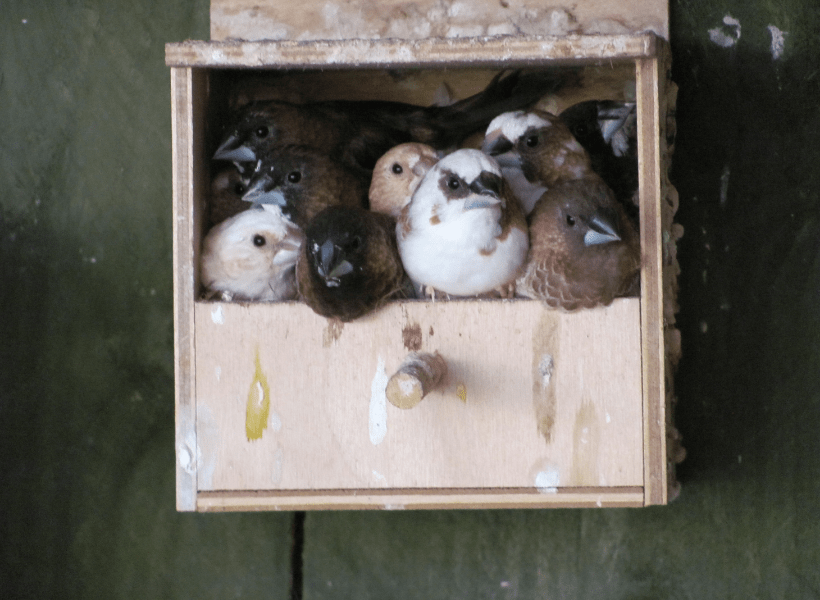
In fact, some people have found breeding them in a flight difficult for one simple reason – they love to crowd into a nest together at night and any eggs can be squashed. I must admit I have bred mine in a large flight without any problems but I think that is more the determination of the birds than anything.
Some of this sociable nature may come from the fact that they are a domesticated subspecies of a wild bird. They are commonly believed to be an offshoot of the White rump mannikin, giving them their Latin name of Lonchura striata domestica. This means that like the domestic canary, these birds never lived in the wild anywhere and perhaps this has given them their extra friendly and relaxed attitude.
Keeping the Bengalese
Bengalese are, in my opinion, one of the easiest and most adaptable finches to keep. They will live in breeding cages, indoor aviaries and large flights equally happily and don’t bicker with other birds. They will often sing forcefully at new arrivals and dominant males will mount them to establish their prominence but this is as aggressive as it gets. They will happily preen other species of birds and share food and water bowls without complaint.
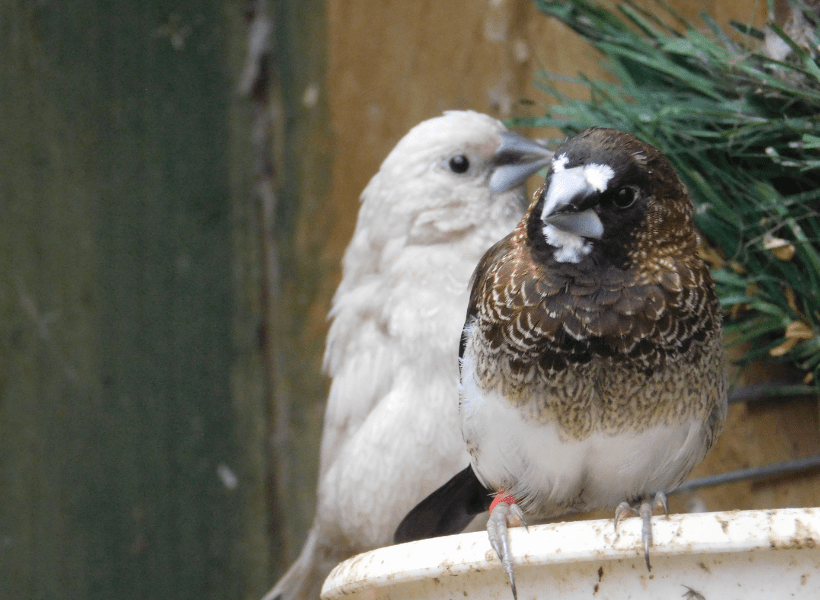
Their basic diet is that of a good foreign finch seed mixture with the addition of egg food, access to grit and a supply of fresh food. Mine will try most anything I put out, perhaps because Spike and Cocoa were so trusting of me so will eat spinach, kale, lettuce, cabbage, grated carrot, berries, apple and almost anything else. Not all birds eat everything but a little monitoring will let you pick out what they ignore.
Bengalese love to bathe and should always have fresh bathing water as well as drinking water. They also like grit to help with digestion and a calcium boost for hens, while some with doubtless enjoy iodine blocks or cuttlefish also.
Colours of the Bengalese
While none of the colours of the Bengalese are as starting as say a Blue capped Waxbill or the Gouldians, there are plenty of different colours and all of them are attractive. A few of the most common mutations include:
- Chocolate – darkest brown, sometimes known as Brown Black
- Chestnut – dark brown, more the colour of chocolate!
- Fawn – lighter brown shade
- Grey – varieties of grey and grey-beige shades
- Pearl – lighter grey
- Cremino – pale creamy white, sometimes with red eyes but usually with black
- Albino – white with red eyes
- Black eyed white – white with black eyes
- Crested – any colour mutation but has a crest of feathers on their heads (yes, wacky looking!)
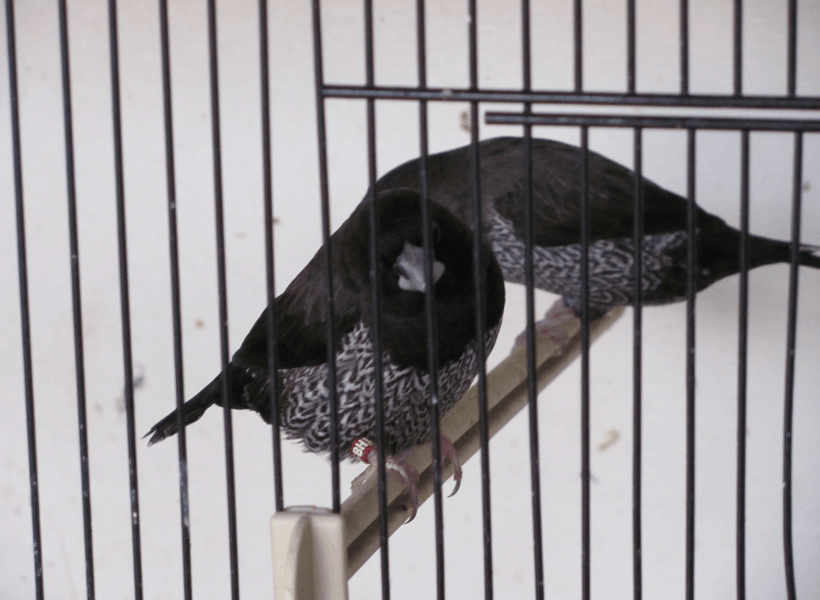
Chocolate 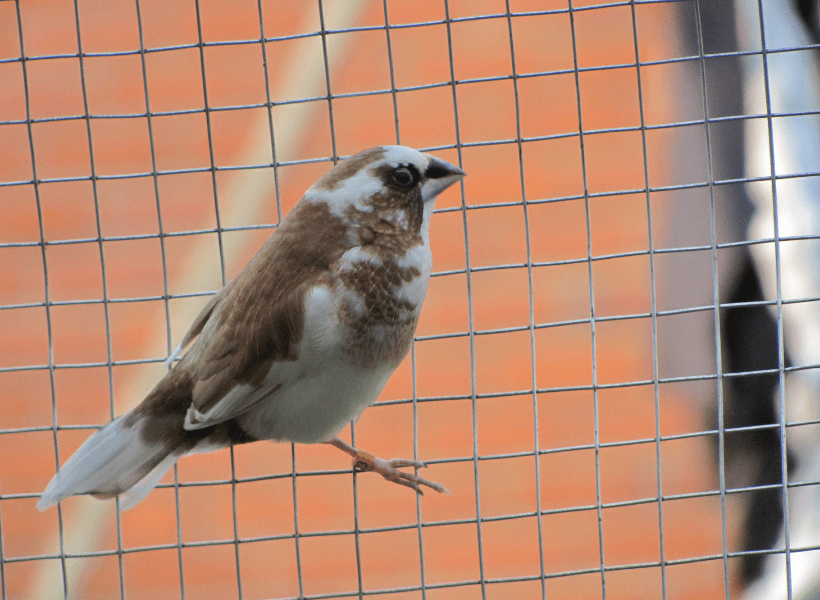
Dilute Chestnut 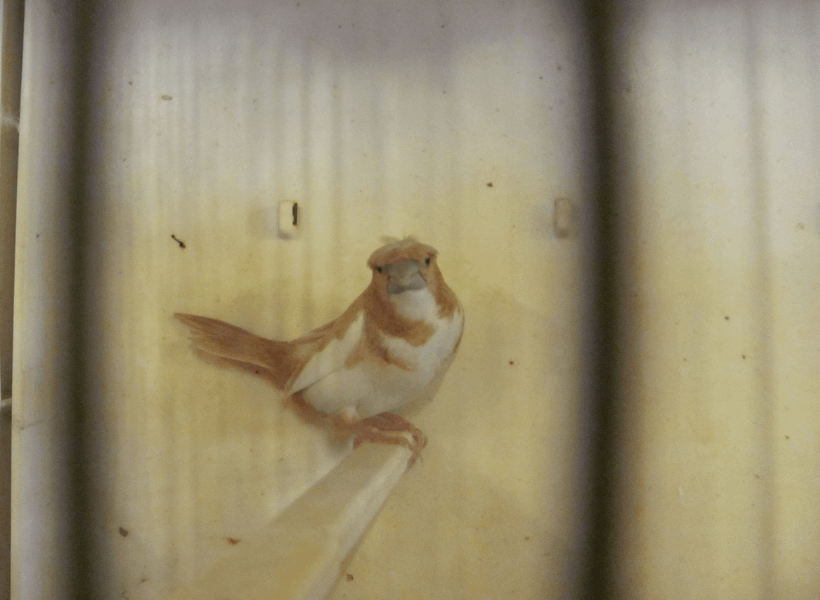
Fawn crested 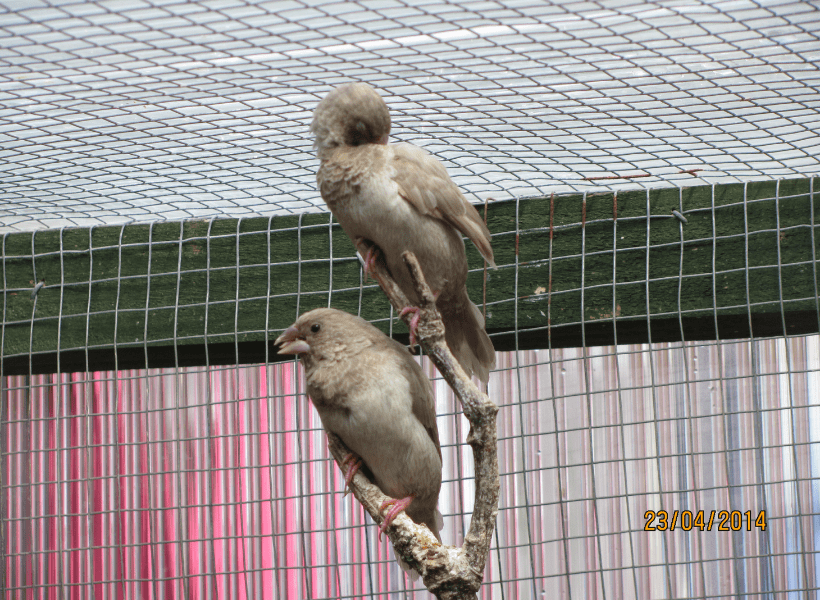
Pearl Grey 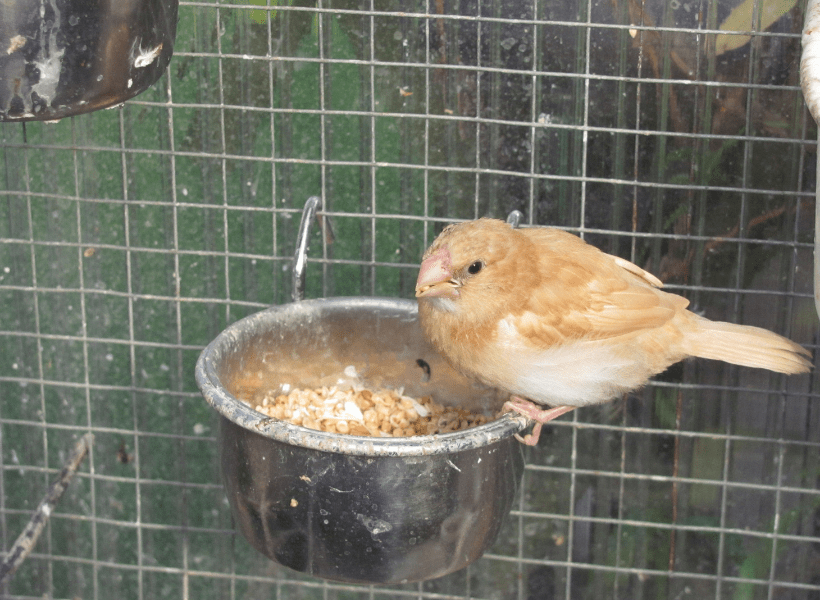
Fawn
Breeding Bengalese
Due to their heritage, Bengalese can hybridise with any of the Lonchura species including the mannikins (or Munias or Nuns depending on how you know them) and the silverbills. My experience is that if these birds have their own mates, they show little interest in the Bengalese as anything other than friendly neighbours.
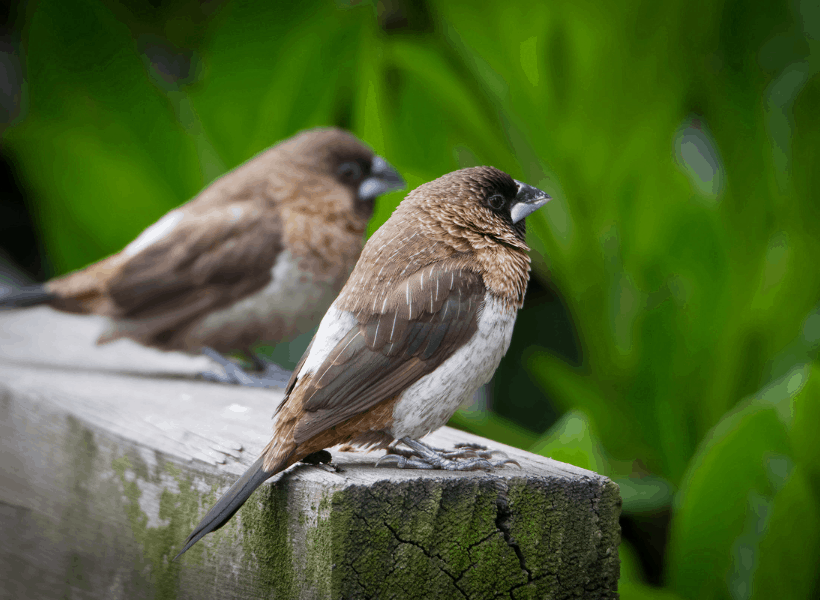
Bengalese are also prized as foster parents and most people breeding some of the trickier finch species keep a reliable pair or three for emergencies of this nature.
Bengalese like to build their own nests and mine have used fake trees, spots behind nest boxes and even tops of cages to build. In cages, they will use wicker nests or proper finch boxes and add nesting material such as coconut fibre, jute and sisal.
They lay between two and eight eggs that are incubated for around 13 days. The chicks are completely naked when born and are in the nest for around 21-25 days. After fledging, they will be fed by the parents for another two weeks or so. These chicks will often help out with the next brood, sharing incubating and feeding duties.
A pleasure to keep
Along with the Zebra Finch, the Bengalese is probably the ideal start finch for new bird keepers. They have a gentle song while the female chat rather than call, meaning they are quite quiet. Their sociably personality means they don’t fight with other birds and live happily in a colony as well as in pairs. They breed quite readily and will produce a number of broods each year when in good condition. All in all, a great little bird.
5
2
1
3